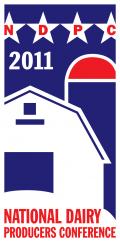Before the close of 2010, the Environmental Protection Agency (EPA) released its final plans for cleaning up the Chesapeake Bay. Known as a total maximum daily load (TMDL), EPA set a “pollution diet” for the Chesapeake Bay Watershed, a 64,000-square-mile region covering Delaware, Maryland, New York, Pennsylvania, Virginia, West Virginia, and the District of Columbia.
The plan requires the six Bay states and D.C. to implement plans that will lead to a reduction in the flow of certain nutrients – nitrogen, phosphorus, and sediment – into the Bay by 20 to 25 percent by 2025, with 60 percent of that goal to be met by 2017. In order to meet these goals, each jurisdiction must chart out a course of how they will meet the reductions prescribed by the EPA. After being rejected initially, these plans were ultimately approved by the EPA, with the exception of a few sectors.
In order to aid farmers in meeting these rigorous goals, several of these plans provide additional funding for agricultural programs, and new assistance for the development and implementation of manure-to-energy projects. Unfortunately, there are serious concerns with many aspects of these final plans, including a potential scenario where farmers may be faced with mandatory programs if goals aren’t realized, which could come as soon as 2013. There were a few instances where the EPA did not approve aspects of a submitted plan. In one instance, EPA crafted a targeted backstop for the agriculture sector in West Virginia. The federal agency also plans to apply additional oversight on Pennsylvania farmers.











